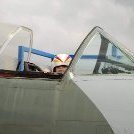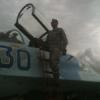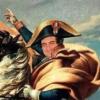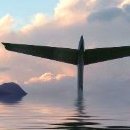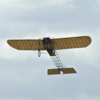Search the Community
Showing results for tags 'Hobby Boss'.
-
In 2021 - Hobby Boss is to release a family of 1/48th Super Hornet. - ref. 85812 - Boeing F/A-18E Super Hornet - released - http://www.hobbyboss.com/index.php?g=home&m=product&a=show&id=1607&l=en - ref. 85813 - Boeing F/A-18F Super Hornet - released - http://www.hobbyboss.com/index.php?g=home&m=product&a=show&id=1625&l=en - ref. 85814 - Boeing EA-18G Growler - released Source: http://www.moxingfans.com/m/view.php?aid=7201&pageno=1 V.P.
- 47 replies
-
- 3
-

-
- Hobby Boss
- Growler
-
(and 1 more)
Tagged with:
-
OK here goes... A Hobby Boss 1/48 F4U-5 Corsair. Initially a project for myself and my 10 year old son. We found this kit hard and he lost interest along the way with this kit so it's more my work than his (luckily he's not lost interest in modelling we have another two kits he's working on). The WIP is here. Hand brushed with Revell Enamels the main 'Sea Blue' is a 1:4 mix of Anthracite and Lufthansa Blue thinned with White Spirit. 5 coats applied. Coat of Humbrol Gloss varnish (thinned with Humbrol enamel thinners discovered this half way through the project!!!) hand brushed before decals were applied using Micro Set mainly (a little micro sol for the decals over the detail). I did try a little gun smoke / exhaust smoke by dry brushing some ground pastel (black for the gun, brown / black for the exhaust) but they don't show that well - mainly due to the dark of the blue I think. Final coat of gloss was Humbrol spray enamel. Not sure I was so happy with this finish I think my spray skills probably lacked below my brushing skills. This is my second model since rediscovering this hobby. I learnt a lot. There were a few emotional times when things weren't going right. But some rewards along the way. Here it is 'warts n all'... Any feedback appreciated.
- 6 replies
-
- 20
-

-

-
- Hobby Boss
- Corsair F4U-5
-
(and 1 more)
Tagged with:
-
Hello All, This is the 1/350 Hobby Boss kit. My local Hobby Town was closing its doors and had this on 50% off clearance, I could not resist. It went together for the most part trouble free. It sure makes my 1/350 LA Class and Alfa class look tiny. Thanks for looking Rod
-
While the forum was flooded with beautiful Tamiya Tomcats I was finishing the Hobby Boss F-14A. Goal was to make a accurate Persian Tomcat, so the choice was the Hobby Boss one. Added with Eduard Sidewinder Niner Juliets to represent the Iranian operated Pappa's variant the job was done. Besides the Sidewinders some other Eduard add-ons were used, Aires exhausts, Wheelliant weighed wheels, and Hi-Decal, well, decals. Hope you like!
-
Hallo This is my Panzer 38(t) Ausführung B as Commander vehicle. The kit from HB in scale 1/35 is with full interior. The track chains I took from Friul. It is to my opinion the best way to achieve a good setting of the track chain. On the other positive side is the easy closing the chain. Here I prevent damage on the finished or almost finished model. Well, that is it. Have a look on it. Always open for suggestions and critics. Happy modelling
-
#22/2021 And my dad has finished the next one. Hobby Boss F4F-3 (late) kit with Superscale decals. The wing walkway decals came from the sparesbox. The kit and also the Superscale star decdals for the wings were to small, took suiting decals from a Czech ROP decals sheet. Painted with a selfmixed blue-grey (Tamiya XF-18 + XF-2) and Gunze H51 Light Gull Grey. Engraved the little camera door on the right belly side. Replaced the awfully molded kit guns with plastic rods. Build thread here https://www.britmodeller.com/forums/index.php?/topic/235097445-flying-leatherneckseyes-in-the-sky148-grumman-f4f-3p-wildcat-vmo-251-usmc/ The F4F-3P was the first photo reconnaissance variant of the F4F fighter aircraft which had entered service with the Navy and Marine Corps in 1940. The basic fighter versions were made famous by VMF-211 defending Wake Island and later VMF-223 at Guadalcanal with the “Cactis” Air Force. The aircraft was a single seater, with non-folding wings powered by a R-1830-86 engine. It earned the distinction of being the first modern photo reconnaissance aircraft to enter service with the Marine Corps and see combat action. The first Marine Corps F4F-3Ps were transferred from the Navy at San Diego and assigned to VMO-251 in June, 1942 after undergoing modifications at the North Island, Ca aircraft support facility. This modification involved removing the reserve fuel tank behind the pilot and installing two aerial cameras with necessary wiring and controls. The normal fighter armament was retained and put to use by VMO-251 upon arrival in the South Pacific in July, 1942. According to several records a total of 18 aircraft were converted to the 3P configuration but its not clear if all were deployed with VMO-251 in July of 1942. The F4F-3Ps were range limited and did not deploy with external tanks so were of limited utility in supporting the initial Guadalcanal operations which began on 7 August 1942. Consequently, the aircraft were mainly used for air defense of their base at Espiritu Santo some 300 miles South of Guadalcanal. Beginning in October 1942 the longer range F4F-7P replacement aircraft began to arrive and began operations from Guadalcanal. (info taken from mcara.us) Wikipedia info: Marine Observation Squadron 251 (VMO-251) was commissioned December 1, 1941 at Naval Air Station North Island, California. In mid-1942 it was transferred to Tontouta, New Caledonia and then to Turtle Bay Airfield on the island of Espiritu Santo in the British-French Condominium of New Hebrides prior to the invasion of Guadalcanal. While flying the Grumman F4F Wildcat during World War II, the squadron participated in numerous Pacific campaigns including Guadalcanal, Southern Solomons, Santa Cruz, Luzon, and the Southern Philippines. In 1943, the squadron transitioned to the F4U Corsair, and was re-designated Marine Fighter Squadron 251 (VMF-251) in February 1945. 22 F4U Corsairs from the squadron landed on Samar on 2 January 1945 as part of Marine Aircraft Group 14 (MAG-14) and continued operations in the Philippines until May 1, 1945 when it flew its last combat mission of World War II while supporting clean-up operations at Leyte. On June 1, 1945, VMF-251 was deactivated at Samar, Philippines Island. Thirteen months later on July 1, 1946, VMF-251 was reactivated at Grosse Ile, Michigan as a ready-reserve squadron. DSC_0001 by grimreaper110, auf Flickr DSC_0002 by grimreaper110, auf Flickr DSC_0003 by grimreaper110, auf Flickr DSC_0004 by grimreaper110, auf Flickr DSC_0005 by grimreaper110, auf Flickr DSC_0006 by grimreaper110, auf Flickr DSC_0007 by grimreaper110, auf Flickr DSC_0008 by grimreaper110, auf Flickr DSC_0010 by grimreaper110, auf Flickr DSC_0012 by grimreaper110, auf Flickr DSC_0011 by grimreaper110, auf Flickr DSC_0013 by grimreaper110, auf Flickr DSC_0014 by grimreaper110, auf Flickr DSC_0015 by grimreaper110, auf Flickr DSC_0016 by grimreaper110, auf Flickr DSC_0017 by grimreaper110, auf Flickr DSC_0018 by grimreaper110, auf Flickr DSC_0019 by grimreaper110, auf Flickr DSC_0020 by grimreaper110, auf Flickr DSC_0021 by grimreaper110, auf Flickr DSC_0022 by grimreaper110, auf Flickr
-
Decided to finally build a replacement for the old Tamiya model my dad built years ago and which doesn´t exist anymore. Gonna do a slightly different Wildcat. A bunch of USMC F4F were converted to foto recon planes by removing the tank behind the pilot and adding a camera. Due to the decreased range the planes were replaced with F4F-7P after some time. In 1943 the unit transitioned to Corsairs and was transformed into a fighter unit, VMF-251. Gonna use the Hobby Boss kit with Super Scale decals DSC_0004 by grimreaper110, auf Flickr DSC_0005 by grimreaper110, auf Flickr DSC_0006 by grimreaper110, auf Flickr
-
Hobby Boss is to release in 2019-2020 a new tool 1/48th Boeing Bell MV-22 Osprey kit - ref. 81769 Source: https://www.facebook.com/TrumpeterModel/photos/pcb.1159171700908088/1159171487574776/?type=3&theater V.P.
- 50 replies
-
- 3
-

-
- Osprey
- Hobby Boss
-
(and 1 more)
Tagged with:
-
I have always found this aircraft very attractive in it`s unpainted state. The history is well known, for those who are interested: https://falkeeins.blogspot.com/2017/11/messerschmitt-me-262-1-wnr-111711-at.html There is also some very good video footage from this aircraft of 1947 in the USA (surprisingly still with swastica on tail): https://www.youtube.com/watch?v=hLk_u7ibSeo Befor I started I considered this an easy project: NMF finish all over with some panels in RLM02 and hand painted 02 over the puttied panel lines. In fact I had huge problems with the look of the NMF, especially of the nose. Furthermore the NMF and the RLM 02 did not contrast as in the pictures of the real thing. I darkened parts of the rear fuselage with thinned black paint and I lightened the darker front around the cannon bays with light grey. I am still not content with the result, but I stopped further changes in order not to ruin the whole thing. So here is what I call final result: Thanks for looking! I am sincerely interested to suggestions and ideas how to do it better. Volker
-
Hello fellow modellers, here you are my last built. It's the easy and relaxing IAR 80 1/48 Hobby Boss kit. Maybe not super accurate but to me good enough to have fun. I built it OOB with just some additional details in the cockpit and slight modifications to lower flaps and elevators. Painting done as usual with Tamiya acrylics and spray finishing. Enjoy the pictures and any comment is more than welcome. Cheers, Andy
-
For my 1st GB of the year I will be building the HobbyBoss 1/48 A-4E .. and yes someone has to build a TopGun themed Skyhawk (it is to join the TigerMig I am also building) ... being crafty with the title I have left myself with the option of either the desert camo style or the 2 tone grey aircraft The build will be OOB , though I plan to make the flaps and slats droopy , Eduard PE cockpit and homemade decals , painted with Mr Hobby and Tamiya acrylics. The Box and Sprue shots
-
Hi Everyone This is the Hobby Boss 1/35 GMC with 40mm Bofors. It was built straight from the box and it went together real easy. It’s not a bad kit for the price but I’m not sure how accurate it is compared to the real thing as some of the detailing appears to be on the heavy side. Not my best effort to date but it turned out ok. Regards Trace
- 7 replies
-
- 36
-

-
- 1/35
- Hobby Boss
-
(and 1 more)
Tagged with:
-
#14/2021 All good things come in three, so here´s my dad´s third and last 262 for now. Hobby Boss kit, "712" decals from Kagero book "Messerschmitt Me 262 In Defence of the Third Reich", rest of decals from the sparesbox, painted with different MRP metal colours, simulated all the filler stuff by airbrushing different grey tones. Brake lines and seatbelts added, EZ Line used for the antenna wires. Build thread here https://www.britmodeller.com/forums/index.php?/topic/235091248-naked-bird148-messerschmitt-me262a-2a-jv44/ In May 1945 the rest of JV44 ended up in Tyrol/Austria. A bunch of 262s and other aircraft, standing and lying around in the mountain valleys, partly destroyed, have been captured there by US troops. Can´t tell if this aircraft was an A-1 or A-2. It had racks like an A-2 but four gun openings like an A-1. DSC_0001 by grimreaper110, auf Flickr DSC_0002 by grimreaper110, auf Flickr DSC_0003 by grimreaper110, auf Flickr DSC_0004 by grimreaper110, auf Flickr DSC_0005 by grimreaper110, auf Flickr DSC_0006 by grimreaper110, auf Flickr DSC_0007 by grimreaper110, auf Flickr DSC_0008 by grimreaper110, auf Flickr DSC_0009 by grimreaper110, auf Flickr DSC_0010 by grimreaper110, auf Flickr DSC_0011 by grimreaper110, auf Flickr DSC_0012 by grimreaper110, auf Flickr DSC_0013 by grimreaper110, auf Flickr DSC_0014 by grimreaper110, auf Flickr DSC_0015 by grimreaper110, auf Flickr DSC_0016 by grimreaper110, auf Flickr DSC_0017 by grimreaper110, auf Flickr DSC_0018 by grimreaper110, auf Flickr DSC_0019 by grimreaper110, auf Flickr DSC_0021 by grimreaper110, auf Flickr DSC_0022 by grimreaper110, auf Flickr DSC_0023 by grimreaper110, auf Flickr DSC_0024 by grimreaper110, auf Flickr DSC_0001 by grimreaper110, auf Flickr
-
Found in the Weibo from one of the most talentuous Trumpy Boss Chinese illustrator, Yiming Zhang: a Pilatus PC-21! The next Hobby Boss secret project after the 1/48th Embraer EMB-314 Super Tucano ( http://www.britmodeller.com/forums/index.php?/topic/234948314-148-embraer-emb-314-super-tucano-by-hobby-boss-released-avm-usaf-conversion-set/ ) ? To be followed. Source: http://tw.weibo.com/3168929860/3931960680189033 V.P.
- 18 replies
-
- 1
-

-
#13/2021 And my dad has finished the next 262. Hobby Boss kit, painted with AK Real Color RLM81/82/76, EZ line for antenna wires and brake lines. The kit includes decals for both prototypes. I don´t know why but HB printed the "V555" decals too large. Found no suiting replacement decals so my dad used the kit ones. He could have built "V484" too but there is only one half-frontal pic of that aircraft but a bunch of fotos of "V555". My dad prefers to have as many pics as possible of the original subject, so he built "V555". It seems this aircraft never had bomb racks mounted. On the pics you can see a box shaped apparatus? measuring device?, no clue what that thing was and how it exactly looked but my dad scratchbuilt a piece. Build thread here https://www.britmodeller.com/forums/index.php?/topic/235090779-speed-bomber148-messerschmitt-me262a-2au2-with-glass-nose/&tab=comments#comment-4082751 As mentioned, two Me262, V484 and V555, were converted to a bomber with a cabin in the nose for an extra bombardier who lied on his belly, flying the aircraft during the final approach. V555 was converted in January 1945, testflights began in February. Besides the glass nose, also a new autopilot, the "Baldrian" acoustic radar and windshield heating was tested. By the end of March, the aircraft completed 22 flights. On April 24th, the Lechfeld airfield was abandoned and V555 was transferred. Most probably from München-Riem/Germany to Hörsching/Austria and around May 4th to Prague-Ruzyne/Czechoslovakia. A few days later it was flown to Zatec/Czechoslovakia were it was captured by US troops on May 8th. DSC_0001 by grimreaper110, auf Flickr DSC_0002 by grimreaper110, auf Flickr DSC_0003 by grimreaper110, auf Flickr DSC_0004 by grimreaper110, auf Flickr DSC_0005 by grimreaper110, auf Flickr DSC_0006 by grimreaper110, auf Flickr DSC_0007 by grimreaper110, auf Flickr DSC_0008 by grimreaper110, auf Flickr DSC_0009 by grimreaper110, auf Flickr DSC_0010 by grimreaper110, auf Flickr DSC_0011 by grimreaper110, auf Flickr DSC_0012 by grimreaper110, auf Flickr DSC_0013 by grimreaper110, auf Flickr DSC_0014 by grimreaper110, auf Flickr DSC_0015 by grimreaper110, auf Flickr DSC_0016 by grimreaper110, auf Flickr DSC_0017 by grimreaper110, auf Flickr DSC_0018 by grimreaper110, auf Flickr DSC_0019 by grimreaper110, auf Flickr DSC_0020 by grimreaper110, auf Flickr DSC_0021 by grimreaper110, auf Flickr DSC_0022 by grimreaper110, auf Flickr DSC_0024 by grimreaper110, auf Flickr DSC_0025 by grimreaper110, auf Flickr
-
Hi All, My latest completion is Hobby Boss' Grumman Avenger, or the Tarpon as it was initially known in FAA service. Although the Hobby Boss kit is generally pretty good in terms of detail and fit, there are a few notable omissions to present an accurate FAA aircraft. I therefore made some modifications to the original, including the following: - Scratch-built the observer's position, including radar scope and chart table - Plunge moulded blister windows for the lower side positions - Scratch-built an instrument panel following a PE disaster Here's the WIP if anyone is interested: I've chosen to model the aircraft as JZ257 of 849 Sqn, which was operating from HMS Victorious as part of the BPF in January 1945. Although I have not found a photo of JZ257, here's a couple of shots of BPF Avengers: The cockpit and observer positions were painted Bronze Green, with the rest of the interior in Interior Green. I chose to complete the undercarriage in white, as I felt that there was sufficient contrast in the above photos to suggest that it was not the underside colour used. The kit decals were dispensed with and I used the lovely Xtradecal 'Yanks with Roundels Part 3'. Paints were EDSG Mr Hobby, DSG Vallejo and AK Interactives Sky Anyway, on with the pics: This one has sat idle for over a year, so I'm really pleased to have got it over the line. It's a beast of an aircraft and I'm glad to have it in the collection! Thanks for looking, Roger
- 28 replies
-
- 42
-

-
- FAA
- Hobby Boss
-
(and 1 more)
Tagged with:
-
Saw this listed on eBay for £9.50, but thought the vendor might have his/her own web shop, so had a look for that ... bought it direct for £7.99.
-
Well, what seemed like a long time in the future is now next week, and I'm scratching my head wondering where I'm going to find the time to build this, but also really looking forward to it. Why? Because I have a soft spot for the 262, and have almost all the 1:48 Hobby Boss kits, and a couple more besides in a larger scale that we won't mention. I've been waiting for the glass-nosed one to come out for ages now, as I once saw one with a conversion in 1:32 (damn!), and that's where this all started. I have the kit, purchased with my own hands, with a set of Eduard wheels, and I'm hoping to get a set of those amazingly realistic HGW seatbelts to add a bit of sparkle to the cockpit, as there doesn't seem to be a specific Eduard PE set for it, and I can't be bothered hunting through the rest of my kits to see if I have any PE hidden there. So - apart from wheels and belts, this is going to be as close to OOB as I get these days, and rather than post up a blank place-holder thread I've taken a snap of the box contents that proves I haven't started it Actually, I have removed one part from the sprue, so I could check the fit of the bulkhead with the metal forward bay. It was not good, because the white metal was a little bit warped, so out came the pliers That's it til Monday, honest!
-
#12/2021 And my dad has finished the next one. Hobby Boss kit, Eduard seatbelts, EZ line for antenna wires, brake lines added. Painted with AK Real Color RLM81/82 and Gunze Aqueous RLM76. Kit doesn´t include US markings, took some from the sparesbox. Build thread here https://www.britmodeller.com/forums/index.php?/topic/235090203-under-new-management148-messerschmitt-me262a-1au4-pulkzerstörer-with-5cm-mk214a-usaaf/ This was another futile German project to stop the allied bomber masses and change the course of war. Two test aircraft were fitted with a modified 5cm PaK, V899 and V083. The first maiden flight (V899) was on March 19th 1945. The same aircraft was used for the first and only combat sortie on April 16th 1945 but no shot was fired due to a jammed gun. At the end of the war, V899 was blown up by the Germans, V083 could be captured by US troops. It was named" Wilma Jeanne", later "Happy Hunter II". During Operation Lusty, the aircraft was flown by German testpilot Ludwig Hofmann from Lechfeld to Melun. Due to an engine fire the pilot had to bail out and the aircraft was destroyed. A third U4 version that was in conversion progress in Augsburg was captured by British troops. DSC_0001 by grimreaper110, auf Flickr DSC_0002 by grimreaper110, auf Flickr DSC_0003 by grimreaper110, auf Flickr DSC_0004 by grimreaper110, auf Flickr DSC_0005 by grimreaper110, auf Flickr DSC_0006 by grimreaper110, auf Flickr DSC_0007 by grimreaper110, auf Flickr DSC_0008 by grimreaper110, auf Flickr DSC_0009 by grimreaper110, auf Flickr DSC_0010 by grimreaper110, auf Flickr DSC_0011 by grimreaper110, auf Flickr DSC_0012 by grimreaper110, auf Flickr DSC_0013 by grimreaper110, auf Flickr DSC_0014 by grimreaper110, auf Flickr DSC_0015 by grimreaper110, auf Flickr DSC_0016 by grimreaper110, auf Flickr DSC_0017 by grimreaper110, auf Flickr DSC_0018 by grimreaper110, auf Flickr DSC_0019 by grimreaper110, auf Flickr DSC_0020 by grimreaper110, auf Flickr DSC_0021 by grimreaper110, auf Flickr DSC_0022 by grimreaper110, auf Flickr DSC_0023 by grimreaper110, auf Flickr DSC_0001 by grimreaper110, auf Flickr DSC_0003 by grimreaper110, auf Flickr DSC_0004 by grimreaper110, auf Flickr
-
MV-22 Osprey (81769) Hobby Boss via Creative Models Ltd The Osprey can trace its roots back a long way into the 1970s, while the tilt-rotor concept goes back even further to the time of very early aviation between the wars. In the 70s Bell began constructing a prototype that bears a family resemblance to the Osprey, complete with twin engines and a very similar overall shape. After the disaster that was the US raid in Iran to free their embassy staff, a gap in their inventory was identified for a large vertical and short take-off and landing aircraft that could also fly at similar speeds to fixed-wing aircraft with a comparable range. This led to the development of the V-22 Osprey that took the basics of the Bell design and enlarged it sufficiently to carry a number of fully-loaded troops or a vehicle the size of a HUMVEE externally, in partnership with the Boeing Helicopter division. It first flew in 1989, and had a relatively troubled gestation that wasn’t yet over when it first went into service in early 2000, although it wasn’t actually used as a true service aircraft until 2007 with the Marines and 2009 for the USAF. A number of test airframes were lost with fatalities, and the Marines lost two airframes early on, which caused some delays to the programme, allowing time for the software that allows the transition between hover and forward flight and assists the pilots to catch up and become the stable, capable platform it is today. Its capabilities have been questioned over the years by some, but a single airframe type can’t be all things to all people, and its ability to land and take-off vertically then transition to forward flight at a similar speed and range to a traditional fixed wing aircraft is an excellent capability for any army. It has seen extensive use in supply and casualty evacuation roles in the recent conflicts and policing actions, and is scheduled to become a carrier communications aircraft this year (at time of writing) to replace the ageing C-2 Greyhound, which it outclasses comprehensively. It came very close to being cancelled at least twice, as the budget and unit cost spiralled higher as the project proceeded, but it has evolved into a very safe method of transport for the Marines, having an accident rate of half that of the traditional rotary aircraft they deploy. Bell Boeing are developing the V-280 Valor(sic) for the US Army, which builds upon the technology pioneered by the Osprey, but changing the tilting mechanism so that only the props move, while the engine stays fixed in the “forward” orientation. The Kit This is a brand-new tooling from Hobby Boss, and it depicts the Marine version of the Osprey that is in common use today. For many a year we’ve been somewhat lacking in choice of kits in this scale, having only the comparatively ancient Italeri kit, which more represents an early prototype without the lumps and bumps or fuselage hump that the in-service aircraft has. Maybe the wait was a blessing in disguise, as we now have a kit that depicts the actual resulting aircraft, rather than having to hack and bang the old kit into shape. The hissing sound you can hear is thousands of Italeri kits being pushed to the back of the stash, although some might baulk at the list price until they see inside. Hobby Boss and their parent company have a habit of pulling back the curtains to reveal kits that are ready to go, so the first most of us heard about it was when it was announced a few months back. It’s a big box, but then it’s also quite a large aircraft, and the detail has been packed into the interior in the shape of a complete internal skin that fills the fuselage from nose to tail (almost). The box is a large one as previously mentioned, and the model is large too, measuring 371mm long by 496mm wide, which I’m assuming goes from tip-to-tip of the massive props. If that width figure scares you and your cabinet space, you’ll likely be pleased to hear that there is a folded option included in the kit, allowing you to pose the wings parallel to the fuselage and all the blades pointing at each other. In the voluminous box but well-packed box you will find eight large sprues of various sizes in grey styrene, a single clear sprue and a small Photo-Etch (PE) sheet containing seatbelts and a few grilles. Detail seems to be excellent, and the airframe is covered in restrained panel lines, raised areas as befits an aircraft with substantial portions made from composites, and a nicely appointed cockpit, with load area similarly well-decked out. The instruction booklet is typical of Hobby Boss fare, and the separate A3 colour painting guide is mute on the subject matter, as usual. Construction begins with the crew seats, which are of the wrap-around type, and have separate cushions and three-part PE belts, but lack lap belts, as seems to be the way with quite a few kits of late. The cockpit is provided as a tub with the rear bulkhead moulded-in, and you place the two seats, control column, throttle and other controls added over decals for the side consoles, after which the main instrument panel with its MFDs and rudder pedals are fitted to the front of the tub, with decals for this also included. The bulkhead is a little bland, but check your references and add some interest there if you feel the urge, or wait for the aftermarket companies to catch up. There is a corridor between the two areas, where lots of avionics will be found in the real thing, with a ribbed insert and a crew door with moulded-in jump seat included along with a fire extinguisher that has a PE bracket securing it to the wall. The nose gear bay is situated below the cockpit, and is made up along with the main bays next, adding gear and wheels, plus retraction jacks along the way. The bays are well-detailed, but little will be seen of them on the deck due to the short legs and low ground clearance, so don’t stress over the building of these parts. You should also be able to leave off the gear legs until after painting, which is nice. The main bays slot into the separate side nacelles that keep the bays and other stuff such as fuel and avionics from encroaching into the load space at 1:1, then these are put to the side while the load area is made up. The load area resembles a slightly smaller fuselage, being made up of two halves, but with the detail being on the inside, consisting of ribs, stringers and the mounts for the many seats that go along the walls. Lots of little details are added first, then thirteen seats on one side, with 12 on the other, all provided as separate parts, a full-width floor that sits on the raised supports projecting from the lower side of the interior, plus another fire extinguisher for good luck. The rear load ramp needs to be made up too, as this is also trapped between the interior halves before closing the fuselage. The lower section folds down, while the upper half folds up in a similar style to the old Hercules ramp. If you plan on posing the cargo doors open, you’re going to have to make your own jacks and as surface detail to the ramp floor, as these aren’t included on the sprues, but the open door option isn’t shown as an option. Before inserting the newly minted interior, a few portholes and other windows are glued into the fuselage sides from within, then the nose bay is added along with the cockpit and corridor, after which you can close up the fuselage, remembering to add the FLIR turret under the nose (minus glue) before you do. There is an overhead console supplied for the inside of the large canopy, which is crystal clear and full of detailed framing and rivets, then the two side sponsons are slotted into the gaps… on the sides. The H-tail is next, and includes a section of the underside at the very rear of the fuselage to make for a strong join. It is made up from top and bottom halves, then joined by the two-piece verticals and a clear light on each of the tips. It is slipped over the rear of the fuselage during fitting of a profusion of aerials, of the blade and towel-rail type, plus the gear bay doors and a number of other sensors, not forgetting the refuelling probe stub in the nose. This is repeated on the top and sides of the fuselage, and includes the some of the PE vents and styrene strakes. The props need power, which is provided by the Rolls-Royce turboprop engines in the nacelles that rotate to provide vectored thrust via the massive three-bladed props. The nacelle is formed from a pair of basic halves, with two baffles trapped inside the rear, a couple of intakes grafted to the exterior, and another in the lower rear of the nacelle, capped off with a curved smiley-face intake and prop boss rear plate, which is held in position and allowed to rotate by a collar. The blades can be made up folded or deployed, and a full set of separate blade parts are included for this, although only one set of bulbous bosses are supplied, so you can’t easily swap them at will, which is a shame. From here on in the instructions focus solely on the folded version, but it’s not rocket science to figure out the unfolded method. The bosses each have three inserts added, and are then joined to the back-plates at the front of the nacelles, to be put to one side while the wings are made. The wings are full-span, and comprise top and bottom sections, the bottom having a flat centre and large hole moulded-in for the pivot. The bulkheads with large axles for the engines are inserted into the end fairings, and a set of flaps are placed into T-shaped recesses in the trailing edge of the wings, with the whole lot closed in by the upper wing, which has many vortex generators moulded along the leading edges. There is another PE grille inserted into the central “hump”, then your engine nacelles can be slid over the axles and joined by a strake on the top surface of the wing. The wing assembly clips onto flexible tabs on the top of the fuselage, so can be left to rotate freely if you wish, and if you have selected the deployed option, it’s as simple as turning the wings to the perpendicular and pointing the props to the sky if you’re going for VTOL, or forward if you’re doing a flying model, but don’t forget the ground clearance for the props. Markings As I alluded earlier, there is only one decal option in the box, and HB tell you precious little about it, other than what colours to use, and where to put the decals. The sides of the aircraft tell you a lot if you know the nomenclature however, and a quick Google reveals that it is from Marine Medium Tiltrotor Training Squadron 204, which is based at MCAS New River, North Carolina. The serial 166483 is assigned there, so that’s nice. The decals are printed anonymously in China, but have good registration, colour density and sharpness, with most of them being lo-viz grey or white. The instrument decals have black MFD screens and white buttons and should stand up to all but the most intent of observers. A Quinta Studios set would be most welcome though. Conclusion This appears to be a nice kit of an interesting (to some of us at least) and novel aircraft. Modelling an In-service airframe has been a labour of love up to now, so it’s good to see a new tool pop out of the Hobby Boss/Trumpeter warehouses. Its weakest point is the rear ramp with simplified floor and lack of struts, but if you’re portraying it with the ramp up it’s not a problem! How long it is before we see a flying model with motorised props remains to be seen. Soon, I hope. Highly recommended. Review sample courtesy of
-
I picked this up on a whim at the LHS a while back, I think it cost me all of about 8 dollars. Looks interesting, clear plastic for the main body and it's almost in one piece. Dad's been bugging me to build it, so what better opportunity really.
- 12 replies
-
- 5
-

-
- Hobby Boss
- Czech
-
(and 1 more)
Tagged with:
-
Soviet T-60 Light Tank (84555) 1:35 Hobby Boss via Creative Models Ltd Just prior to WWII, the Soviets were casting around for a light tank to replace their ageing fleet, and true to Soviet form, a totally non-confusing situation occurred with two prototypes developed that went on to receive different marks. The amphibious version became the T-40, while the dry-land only T-60 was often referred to as the T-60 Scout Tank to avoid confusion with another similarly named tank. The T-60 was fitted with heavier armour and a 20mm cannon, keeping the original 12.7mm machine gun, but as its coaxial mount. It was under armed and armoured, and wasn’t very well liked apart from the Germans, who loved knocking them out. There were changes made after the initial batch, substituting the spoked wheels with solid dished ones to help with mud-clearing and preventing the drivetrain from freezing in the harsh winter months. The armour was upgraded too, and after considering the 37mm cannon, a larger 45mm gun was chosen instead, mainly because they could find ammo for the larger gun! Even in its updated form it was uno-longer suited to front-line service by 1942 and was withdrawn to other tasks, such as a carrier for Katyusha rocket launching racks. A number were pressed into service by the Germans after capturing them, and even they weren’t very fond of them from the inside. The Kit This is a new tool from Hobby Boss, with more variants including the TACAM T-60 to be expected any minute. It represents the earlier version, although that’s not clear from the box, which incidentally is one of their usual top-opening ones. Inside the box are four sprues and a lower hull part in sand coloured styrene, seven more in brown, a small fret of Photo-Etch (PE) and an even smaller sheet of decals. The instruction booklet is printed in black and white with a separate colour painting guide printed on both sides of glossy A4 paper. It’s a diminutive tank, so there’s not a huge quantity of plastic in the box, but that’s only to be expected at this scale. Detail is good throughout, and this is an exterior kit with individual track links on the brown sprues. Construction begins with that wee lower hull, which gets a number of holes drilled out and some filled in, then final drive housing, towing hooks, suspension swing-arms, and return rollers are all glued in place, closely followed by the road wheels and drive sprockets. That brings us post-haste to the tracks, which as already mentioned are individual links in brown styrene with 26 per sprue. Each side has 81 links, and they are best glued with liquid glue and wrapped around the road wheels before the glue has set, then set to the correct sag by packing or weighting them appropriately. Each link has three sprue gates and are surprisingly small but perfectly formed with two hollow-moulded guide horns on each one. Clean-up should be easy too, as the attachment points are on the curved edges between the links, so will respond well to a fine sanding stick. I slapped a few together to test them on my MasterTools track jig (highly recommended BTW), and they go together nice and easily. One they’re glued, just snug them up together and count to 81. Just remember that you have zero spare links in reserve, so be careful not to lose any during construction. With the tracks complete, the fenders slot their tabs into holes in the sides of the hull with stowage boxes and stiffening webs from the PE sheet added along the length. The upper hull has the driver’s area separate with a dual fold hatch, some raised bits (a technical term) and a large PE mesh panel to fit over the big cooling louvers on the engine deck, plus a raised box on the deck with PE mesh on the sides. Another PE strip is applied to the ledge below the driver’s hatch as a bullet-splash shield, and another bracket is fitted to the left side of the hump to which the lights are fitted, while the driver’s flip-up vision port is slipped between two hinge-points above the slot. Gluing the top hull to the bottom is followed by the addition of the exhaust, which sprouts from a port on the mid-deck, and ends with a muffler on the rear bulkhead with the help of a 90o bend. A scrap diagram shows the finished assembly to assist with positioning. At the front, a pair of stiffening plates are fixed between the fenders and glacis plate, one styrene, one PE, and again there’s a helpful scrap diagram to show how they are installed. I always find the turret fun, so prepare for some fun! The turret is of angular construction, and arrives with most of the facets moulded in-place. The protruding front area around the mantlet is separate and made up with a lower plate, then it is glued into place in the front with the mantlet, held in place by the end-caps that have pegs moulded-in that slot into the pivot points on the outside of the turret. The 12.7mm coax slides through the mantlet from the inside, but the main gun is assembled from the outside, with a two-part rectangular sleeve, and a single piece gun tube that has a slide-moulded hollow muzzle for your convenience. There is a hatch in the top with a tiny stand-up button on the outside, then a pair of PE rainwater deflectors are glued to the two small vision/pistol ports on the turret sides. The turret slots into the hull and secures with a pair of bayonet lugs so you don’t lose it if you go to inspect the underside. Markings As usual with Hobby Boss kits, there’s very little about the decal subjects, of which there are two. They’re both Russian Green and differ only in their markings, which to be fair are quite different, as option 1 has a striking white triangle motif with a red star painted on the turret roof. From the box you can build one of the following: The decals are printed in China and up to the task in hand, with good register and sharp printing, even though it’s a small sheet with only a few colours. Conclusion This is a nicely detailed model of this dinky little tank that wasn’t particularly well-liked by anyone that didn’t have them in their cross-hairs. A simple build should leave plenty of time for the painting and weathering. Highly recommended. Review sample courtesy of


